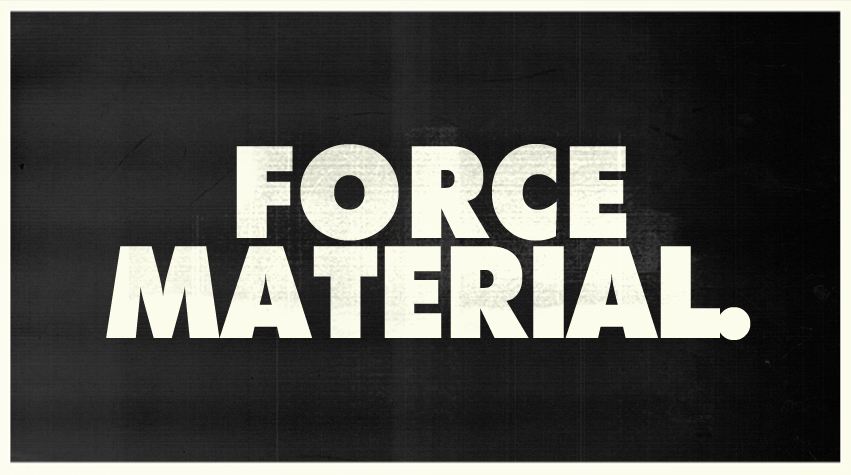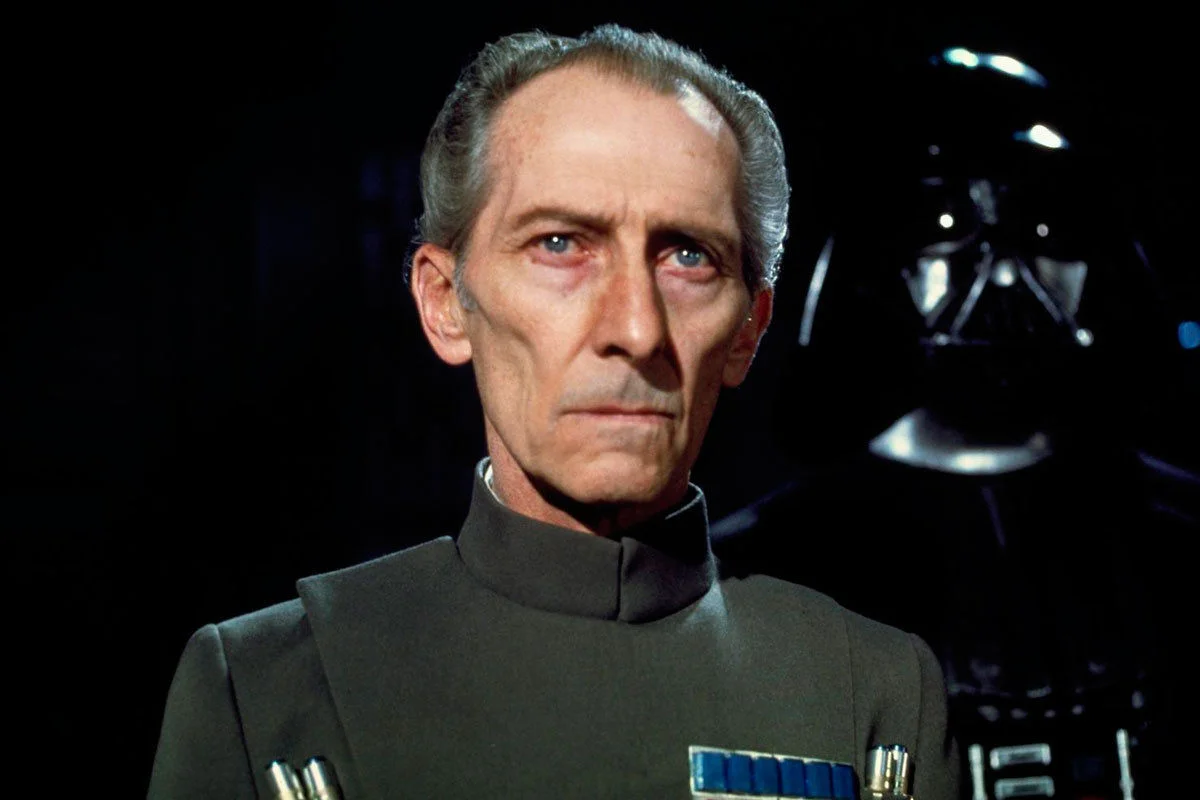Six for VIII: Six films to watch before Star Wars Episode VIII
Episode VIII comes out this year, so it’s time to get stuck into director Rian Johnson’s recommendations.
It’s hard to believe, but in just under 12 months, we’ll be sitting down to watch the third new Star Wars film in the space of two years.
It’s time, then, for Star Wars fans to start spending all of our waking hours (and more than a few of our sleeping hours) obsessing over Episode VIII.
Luckily, writer and director Rian Johnson has given us a good place to start.
At last year’s Star Wars Celebration in London, Johnson revealed the six films that he asked the cast and crew to watch before they began shooting.
Three Outlaw Samurai (1964)
It wouldn’t be a proper Star Wars movie without a samurai influence, would it? Director Hideo Gosha’s film tells the story of Shiba (Tetsuro Tamba), a wandering ronin (masterless samurai) who comes across a band of peasants who have kidnapped the daughter of the local magistrate.
Instead of rescuing her, Shiba listens to the peasants’ grievances with the magistrate and sides with them – as do two samurai, Kikyo (Mikijiro Hira) and Sakura (Isamu Nagato), who are ostensibly working for the magistrate.
In my opinion, this is the most interesting film on Johnson’s list, because it’s so, well, anti-Star Wars. It’s a film that almost resembles the Kurosawa classics that helped to inspire Star Wars, but is really something of a Trojan horse – a way for Johnson to smuggle in ideas and philosophies that run counter to what we expect from the franchise.
This is a film, after all, in which we root for the characters who have kidnapped the ‘princess’; in which alliances are remarkably fluid, betrayal is a way of life and the line between good and evil has virtually been rubbed out; and in which our ‘heroes’, rather than securing some grand victory, discover that all their efforts have been for naught.
Crucially, it’s a film in which the cool, cynical character is ultimately proven to have been completely right to be cynical, and it’s hard to get further away from Star Wars than that.
Oh, and it features some absolutely dazzling fight choreography, to boot.
Twelve O’Clock High (1949)
Directed by Henry King and starring Gregory Peck as Frank Savage, a hard-ass general who assumes command of a struggling and demoralised bomber unit, Twelve O’Clock High is a study in leadership.
At first, Savage’s domineering style gets the pilots off-side – especially when he fires popular Air Exec Ben Gately (Hugh Marlowe) – and they all apply for transfers. But they soon realise that Savage’s disciplinarian ways get results, and they withdraw their transfer requests.
At the same time, Savage reconciles with Gately, after learning that Gately flew three missions with a fractured vertebra. Savage’s attitude towards his pilots gradually softens, although he continues to drive himself hard – so hard, in fact, that he cracks under the pressure of a brutal mission, and Gately is forced to take his place.
Since Johnson is telling fans to watch this film, it’s unlikely any of the plot details in Episode VIII are going to be direct lifts from Twelve O’Clock High, but it’s certainly easy to see General Leia as Frank Savage and Poe Dameron as Ben Gately, isn’t it?
Then again, we don’t know who Laura Dern is playing yet – it’s possible she’s a tough-as-nails General who clashes with Dameron (or Finn, or Rey, although she’s likely to be keeping busy with Master Luke).
It’s possible, of course, that Twelve O’Clock High is an important influence not because of its plot, but because of the way it was shot – the film made extensive use of actual combat footage, and it has been cited by heavy bomber pilots as the only film that accurately captures their experience.
Johnson won’t have access to footage of actual space battles to use in Episode VIII, sadly, but he might be aiming for a similar visceral realism.
The Bridge on the River Kwai (1957)
Directed by David Lean, this is the story of a British officer and POW, Lieutenant Colonel Nicholson (played by Old Ben Kenobi himself, Sir Alec Guinness).
Nicholson is forced to build a bridge for his Japanese captors. Despite the fact that the bridge will be of military value to Japan, Nicholson eventually sets his mind to completing it, intending it to stand as a testament to British discipline and ingenuity long after the war is over.
Meanwhile, Allied forces are plotting to destroy the bridge that Nicholson is building, and when they enact their plan, they find an unexpected obstacle in Nicholson.
Lean’s Lawrence of Arabia was a major influence on Lucas, so it’s fitting to see another of his films given a shout-out here. Aside from the director’s trademark sweeping scope, there are a couple of ways that Lean’s classic could influence Johnson’s film.
At Star Wars Celebration, Johnson said that Episode VIII will begin “zooming in on the characters, challenging them, getting deeper,” and seeing Rey, Finn or Poe forced into servitude as prisoners of war would certainly give us a chance to see what they’re really made of.
But Kwai is also a study of motivation, and of the ways war blurs the lines between good and evil – Nicholson and his Japanese captor, Colonel Saito (Sessue Hayakwawa), find a way to work together for a common goal, and develop something of a bond in the process.
Is it possible that one of our heroes will be forced to find common ground with a Kylo Ren or General Hux?
Letter Never Sent (1960)
Mikhail Kalatozov’s Soviet survival drama tells the story of four geologists (three men and a woman) as they head deep into a Siberian forest on the hunt for precious stones.
Their ‘enemy’ is nature — they almost starve to death in the forest, before finding a stash of diamonds; and before they can bring the diamonds home, they are trapped by a forest fire.
The closest Star Wars comparison here is Empire Strikes Back, when Luke and Han had to fight against the elements on Hoth to survive. It’s possible our heroes will have to struggle to survive in a similarly hostile environment in Episode VIII, which, again, might help us learn more about who they really are when the chips are down.
It’s worth noting that there’s also a love triangle between three of the geologists in Letter Never Sent — one of the titular unsent letters is from the mature Sergei (Yevgeny Urbansky) to the young Tanya (Tatyana Samoilova), despite the fact that Tanya has a boyfriend, Andrei (Vasili Livanov). Sergei writes the letter as a way to express his feelings but never intends it to be seen by anyone; when the letter is exposed, it causes tension within the group.
Plenty of fans, of course, have already paired off Rey, Finn and Poe in various combinations, so the question is, will this love triangle play out on-screen?
Gunga Din (1939)
Set in 19th century India, George Stevens’ classic adventure film tells the story of three British soldiers (Cary Grant, Victor McLaglen and Douglas Fairbanks, Jr) and their native waterbearer Gunga Din (Sam Jaffe), who must stop a mass revival of the Thuggee, a murderous cult thought to have been supressed, who are actually plotting a comeback.
Again, it’s unlikely that Johnson is going to give away the plot of his own film by listing these influences, but Snoke is basically a cult leader – and he’s already led a comeback of a murderous group that was no longer considered a threat. Perhaps in Episode VIII we could see the return of the Sith or another Dark Side religion en masse.
Gunga Din is a film about a handful of soldiers taking on swarming enemies and overwhelming odds; it’s an underdog story, very much in the spirit of the original Star Wars trilogy. The Jedi, of course, greatly outnumbered the Sith in the prequel trilogy, so it could be fun to see those numbers flip in Snoke’s favour this time around.
Incidentally, this won’t be the first Lucasfilm project to take inspiration from Gunga Din – some shots and situations in Indiana Jones and the Temple of Doom were lifted directly from Stevens’ film.
Sahara (1943)
Zoltan Korda’s war film follows Sergeant Joe Gunn (Humphrey Bogart) and his tank crew as they retreat across the Libyan desert following the fall of Tobruk.
In the process, they pick up stranded soldiers from other Allied nations, including a Sudanese soldier, Tambul (Rex Ingram), and his Italian prisoner, Giuseppe (J Carroll Naish). At first, Gunn insists that Giuseppe be left behind, but he eventually relents and allows him to remain with the group.
Tambul leads the group to a desert fortress, where they hope to find water. The well is almost dry, so the group delays their departure to give themselves time to collect as much water as possible – giving German scouts a chance to catch up with them.
Gunn eventually finds himself playing a cat-and-mouse game with the Germans, and maintains the illusion that the well still has water even after it has run dry in a bid to negotiate and buy time.
Of course, the Germans attempt to take the well by force, and Gunn’s small, ragtag band of soldiers is forced to defend itself against wave after wave of enemies. Even Giuseppe plays his part, rewarding Gunn’s decision not to abandon him.
Sahara, then, is another movie about a small group of people in an impossible situation doing everything they can to survive, and it’s another movie in which allegiances can be fluid and soldiers on opposite sides manage to make an unlikely connection with each other.
It’s looking more and more likely that our heroes will be put through the wringer in Episode VIII like they never have been before, and will have to prove their mettle in a situation that will make the attack on Starkiller Base look like a walk in the park.
(I mean, even more than the briefing before the attack on Starkiller Base already made the attack on Starkiller Base look like a walk in the park.)
And it sure looks like someone’s getting taken prisoner in Episode VIII, and that in the process, they’ll find themselves forced to forge an unlikely alliance with the enemy – but will it be Rey, Finn or Poe caught behind enemy lines, or will Kylo Ren be taken into custody?
Of course, this could still be a misdirect, and Episode VIII could have nothing to do with POWs at all.
Adam Driver copped some flak a little while back for comparing Episode VIII to The Empire Strikes Back, but looking at these influences, it seems like a fair comparison. It (hopefully) won't follow that film beat-for-beat, but it probably will take our heroes into darker territory and introduce a little more complexity into the proceedings, just as Empire did.
Regardless, there are plenty of clues to be found in these films, and plenty of reasons to pore over them – the main reason, of course, being that they’re all great movies.
Force Material is a podcast exploring the secrets and source material of Star Wars with hosts Rohan Williams and Baz McAlister. Listen and subscribe on iTunes, Spotify, iHeartRadio, TuneIn, Stitcher, PlayerFM and Castro; stay in touch with us on Facebook, Twitter and Instagram; and support the show by browsing our range of shirts, hoodies, kids apparel, mugs and more at TeePublic.






